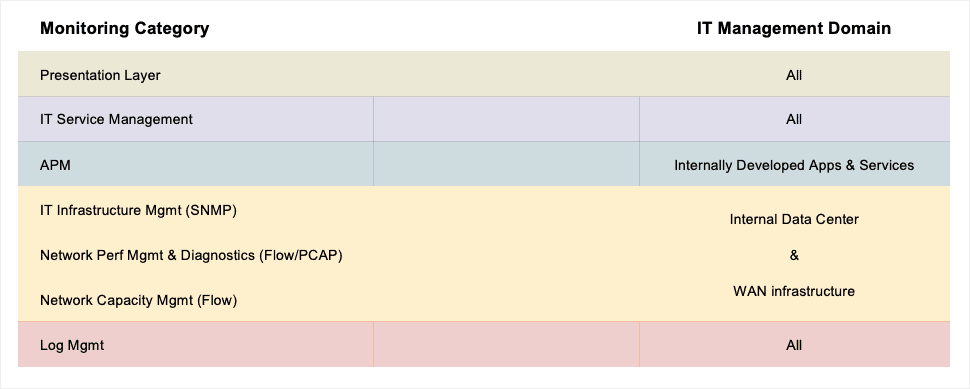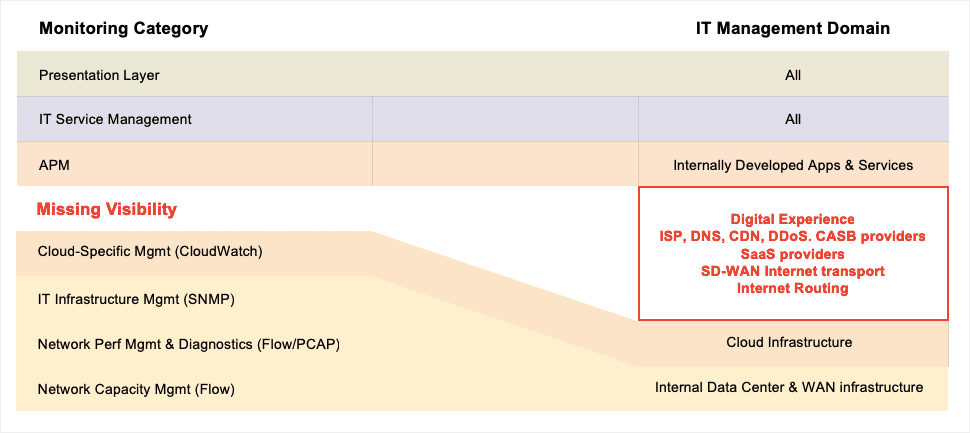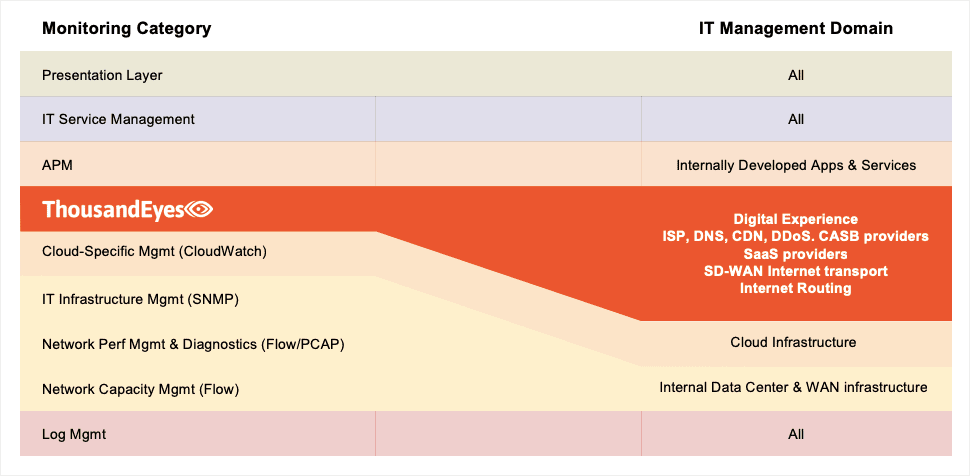The transformation to cloud and digital: for most companies, this is the order of the day in any way. These highly visible and cost-intensive projects pose numerous challenges: from choosing the right technology stack and cloud architecture to service orchestration and network automation. However, one aspect is often overlooked: the change needed in the cloud, particularly in the areas of monitoring, troubleshooting and troubleshooting. It’s important to understand how different your connectivity environment is for delivering cloud services. It’s also important to create realistic expectations, access monitoring data to manage that service delivery, and implement life cycle processes that fit the dynamic nature of the cloud and the Internet. In short, how do you ensure that your cloud strategy knows as little risk as possible and maintain operational visibility during your transformation to the cloud?
Moving to the cloud: struggling with performance management, network planning and security
Any company that is not a digital company today is probably well on its way to becoming one. This digital transformation aims, for example, to provide customers with a seamless omni-channel experience or to modernise the workplace by fully committing to SaaS. All these initiatives have one thing in common – apart from increasing sales, reducing operating costs and providing an exceptional user experience – they all face a wide range of challenges.
Sixty percent of companies moving to the cloud is still struggling with performance management, network planning and security. That’s what recent research by EMA Research has shown. Choosing the right cloud or the best SaaS platform for collaboration and communication is crucial. But it’s just as important to ensure that these services deliver on their promises and SLAs – and most importantly, that they deliver excellent user experiences. Why is this such a challenge?
That’s because you have to deal with more factors you depend on. From DNS to CDN to third-party APIs and public cloud providers. When you trust entities over which you have no control, it can be difficult to see how they perform. In the cloud, the Internet has become the central nervous system for communication. If you are dependent on a network that is not built for corporate communication and whose security is questionable, you are susceptible to those vulnerabilities. Security risks such as DDoS and BGP hack go hand in hand with having an online footprint.
New network, new way of monitoring
IT teams of large companies are used to handling problems within their own network. But as boundaries fade and become more dependent on multiple third-party networks and services – as is the case in the cloud – these teams, too, find it difficult to predict, understand and resolve performance issues.
If you own the application and network in a traditional business environment and host it in your own data center, the monitoring stack in Figure 1 is sufficient to detect and identify problems. For example, SNMP polling can help detect device failures. Flow data can also be analysed to prevent bandwidth load problems. If you own the application, APM techniques such as performance and availability monitoring, as well as profiling techniques that detect internal function calls and code injection, can provide you with insight into end-user performance.

All these techniques have their own useful function. But are they sufficient when you switch to the cloud? What happens when you move applications to a public cloud environment? Even if you are the owner of the application code hosted by a public cloud provider such as AWS, you have no control over the infrastructure and the network schedule. This means that APM techniques, such as code injection, continue to work well within the public cloud because apps and microservices are built to be agnostic for the underlying infrastructure. But techniques such as packet capture and SNMP, on the other hand, lose much of their usefulness because the network and infrastructure are so highly abstracted. And what about SaaS, where you don’t own the infrastructure or the software? In this case, both APM code injection and SNMP, packet capture and flow data mean nothing.
Traditional monitoring: watch out for gaps

Lack of visibility: what is at stake?
Therefore a lack of visibility in the network is a problem, that is obvious. From a technical point of view, a loss of visibility in the cloud and in the Internet ecosystem leads to problems such as a poor base, messy or misconfigured alerts and long and sometimes infinite MTTRs. When you lose control of IT assets, the pressure on the IT team increases, even to simply isolate a failure. If you don’t have enough visibility, how do you know if the cause of a cloud problem is internal, or due to an ISP, SaaS vendor, etc.? In other words, which provider should take responsibility, intervene and solve the problem? Without a good amount of diagnostic data, you’ll have trouble convincing a provider that it’s their problem – and they won’t respond effectively and certainly not in time to your escalation.
From a business point of view too, a lack of visibility and control can have nasty consequences. It means that you are exposed to a high risk of damage to sales, brand reputation and employee productivity and engagement. Switching to the cloud brings with it many possibilities and opportunities, but just as many performance and security risks (such as BGP and DNS hijacking). Therefore, having no visibility is not an option and requires problems.
Making your cloud risk-free with operational visibility
A solution to a lack of visibility is to address your monitoring strategy and redesign your IT monitoring stack, as shown in Figure 3. ThousandEyes, for example, offers a solution in the form of numerous, worldwide so-called vantage points on the Internet. This is not so much about replacing traditional monitoring techniques as about redesigning your existing methods. In this way, you can master the most important new challenges and risks in the cloud and take full advantage of all that the cloud has to offer your organisation.

This is a contribution submitted by Ramón Hemelrijk, Regional Sales Manager at ThousandEyes. Through this link, you can find more information about the company.
